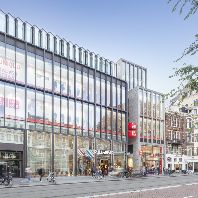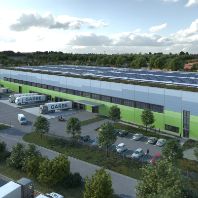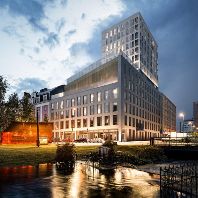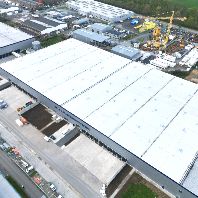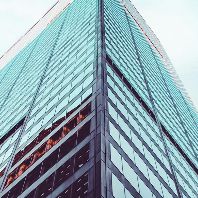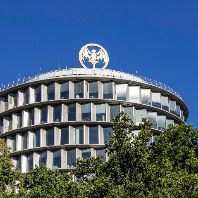Thirteen years after the concept was first mooted, Warsaw's newest attraction, the Copernicus Science Center, has celebrated its opening with a spectacular light and animation show created by British art house film director Peter Greenaway.

A key challenge faced by the Buro Happold team was delivering 15,000m² of floor space on two levels within a building frame with strict height limitations, over an existing six-lane road tunnel.
Situated on the banks of the River Vistula, the mission of Poland's most modern education and cultural center is to inspire curiosity, support learning and make science more accessible and comprehensible to a wider audience. It will do this by combining science with art; the center will champion scientific discovery through science shows, workshops, laboratory classes and planetarium sessions together with more artistic endeavors such as concerts, performances and films to build a positive image of science and show the part it plays in today's culture.
Buro Happold delivers biggest cultural investment project
Financed through Warsaw city council's 'Infrastructure and Environment' program the Copernicus Science Center is the biggest cultural project in the Masovia region, east central Poland. International multidisciplinary engineering consultancy Buro Happold provided multidisciplinary design services for the concept and scheme stage of the project, and structural engineering during the construction stage of the building. The architect was Polish firm RAr-2 Laboratorium Architektury.
Harnessing nature and new technologies
The center, which emulates a wave-like form in keeping with its river-side location, features a number of innovative construction solutions and many finishing materials never used before in Poland. The internal exhibition spaces are lit by natural daylight which filters through crater-like skylights in the roof which also regulate temperature and internal ventilation. The facade is made of a newly developed fiber-glass reinforced concrete, which features an exterior design created by a team of artists, construction specialists, geologists and landscape architects to be sympathetic to its environment. The planetarium which stands higher than the rest of the building is covered in special red raster glass designed to prevent light reflection. The building is surrounded by parkland, which even extends to the roof.
Preventing future floods
A key challenge faced by the Buro Happold team was delivering 15,000m² of floor space on two levels within a building frame with strict height limitations, over an existing six-lane road tunnel. This resulted in Poland's biggest post-tensioned platform with a main span of over 30 m and also storey high steel trusses spanning 48 m with a 20 m long cantilever. Another was to ensure the building was flood proof, given its proximity to the Vistula. The river has been known to experience strong floods and when this year it reached its highest lev
Buro Happold delivers biggest cultural investment project
Financed through Warsaw city council's 'Infrastructure and Environment' program the Copernicus Science Center is the biggest cultural project in the Masovia region, east central Poland. International multidisciplinary engineering consultancy Buro Happold provided multidisciplinary design services for the concept and scheme stage of the project, and structural engineering during the construction stage of the building. The architect was Polish firm RAr-2 Laboratorium Architektury.
Harnessing nature and new technologies
The center, which emulates a wave-like form in keeping with its river-side location, features a number of innovative construction solutions and many finishing materials never used before in Poland. The internal exhibition spaces are lit by natural daylight which filters through crater-like skylights in the roof which also regulate temperature and internal ventilation. The facade is made of a newly developed fiber-glass reinforced concrete, which features an exterior design created by a team of artists, construction specialists, geologists and landscape architects to be sympathetic to its environment. The planetarium which stands higher than the rest of the building is covered in special red raster glass designed to prevent light reflection. The building is surrounded by parkland, which even extends to the roof.
Preventing future floods
A key challenge faced by the Buro Happold team was delivering 15,000m² of floor space on two levels within a building frame with strict height limitations, over an existing six-lane road tunnel. This resulted in Poland's biggest post-tensioned platform with a main span of over 30 m and also storey high steel trusses spanning 48 m with a 20 m long cantilever. Another was to ensure the building was flood proof, given its proximity to the Vistula. The river has been known to experience strong floods and when this year it reached its highest lev


